North Dakota (ND) is located in the American Midwest at the border with Canada. Agriculture, oil and gas production contribute significantly to the state’s economy, and North Dakota’s unemployment rate is among the lowest in the USA. The capital of North Dakota is Bismarck, but the largest city is Fargo, which is the cultural center of the state. Another popular tourist attraction is Theodore Roosevelt National Park.
-
Table of Contents
Quick Facts
Name North Dakota Abbreviation ND Capital Bismarck Largest city Fargo (Population: 133 188) Current time 6:20 Time zone CST (UTC-6) is in effect in most of the state, MST (UTC-7) is in effect in a smaller area to the west. The state observes daylight saving time CDT (UTC-5) and MDT (UTC-6) Population 779,079 (#47 most populous US state) Area 70,705 sqmi (#19 largest US state) Admitted to the Union November 2, 1889 (#39 state to join) ⭐ Capital of North Dakota
Bismarck is the capital of North Dakota, founded on the west bank of the Missouri River in 1872. It was named Edwinton for the first two years and was later renamed in honor of German chancellor Otto von Bismarck. In 1883, Bismarck became first the capital of Dakota Territory, then the state capital after North Dakota entered the Union in 1889.
🏙️ Largest City in North Dakota
The largest city in North Dakota is Fargo, with a population of 133,188 in 2023. The second largest city is Bismarck, the capital, with a population of 75,092 and the third largest city, Grand Forks, has a population of 58,921.
🕒 Time in North Dakota
The current time in most of North Dakota is 6:20. Most of the state follows Central Standard Time (CST, UTC-6), with only a small area in western North Dakota using Mountain Standard Time (MST, UTC-7). Between March and November, the entire state switches to daylight saving time.
🧑🤝🧑 Population of North Dakota
According to 2023 data, North Dakota had a population of only 779,079, ranking it as the 47th most populous state in the USA.
📍 Area of North Dakota
The total area of North Dakota is 70,705 sqmi, of which 68,994 sqmi is land and 1,710 sqmi is water. North Dakota is the 19th largest US state.
-
Fun Facts About North Dakota
🧩 North Dakota Neighboring States
North Dakota is bordered by three American states. Montana to the west, Minnesota to the east and South Dakota to the south. In addition, it borders the Canadian provinces of Saskatchewan and Manitoba to the north.
📅 Date of North Dakota Statehood
North Dakota was admitted to the Union on November 2, 1889, when it separated from Dakota Territory. North Dakota is usually referred to as the 39th state of the United States, although South Dakota was admitted to the Union on the same day. President Benjamin Harrison deliberately signed both proclamations in no particular order.
📛 Nickname of the State of North Dakota
North Dakota has several unofficial nicknames. “The Peace Garden State” refers to the International Peace Garden, which was established in 1932 on the border with the Canadian province of Manitoba. The purpose was to express the friendship between the two nations in the form of flower beds, trees and ponds.
The second nickname, “The Roughrider State”, is related to President Theodore Roosevelt, who owned ranches in North Dakota and had significant personal and political ties there. The Rough Riders was the name of a volunteer cavalry regiment that participated in the Spanish-American War in 1898 and of which Roosevelt was a member.
The third nickname used, “The Flickertail State,” refers to the high distribution of gophers in North Dakota.
⛰️ Highest Mountain in North Dakota
The highest mountain in North Dakota is 3,504 ft White Butte, located in the southwestern part of the state. Butte refers to the so-called Witness Mountain, a solitary elevation formed by erosion.
🏞️ Rivers in North Dakota
The longest river in North Dakota is the Missouri River, with the total length of flow in all states 2,341 mi. It is followed by the James River (708 mi), Yellowstone River (692 mi), Sheyenne River (591 mi), and Little Missouri River (559 mi).
🎓 Universities in North Dakota
The largest university is North Dakota State University in Fargo; it opened in 1890 and today has over 14,000 students. The second is the University of North Dakota in Grand Forks with 14 thousand students, it started its operation in 1883.
Another major university in North Dakota is Minot State University. It is attended by just under 4 thousand students and has had its campus in Minot since 1913.
✉️ North Dakota ZIP Codes
All addresses in North Dakota have a dedicated ZIP code range of 580xx-588xx, you can search for them on the USPS website. For detailed information on how the system works and a clear map, see the article ZIP Codes in the USA.
-
Weather in North Dakota
The best time to visit North Dakota is between June and August, when the weather tends to be warm and sunny with minimal rainfall. In the summer, the days are long and you can enjoy being outdoors.
Although spring in North Dakota brings a gradual warming, alternating warm and cool days are to be expected. March temperatures in the largest city, Bismarck, range between 19 °F and 36 °F, with May being much more pleasant 45 °F to 70 °F. In areas in the north of the state, snow may persist until April, which then turns to slushy terrain. In addition, rainy days are increasing as temperatures rise. In April and May in particular, days of heavy rain and severe thunderstorms are possible, which can cause flooding.
Summers in North Dakota are dry and hot, with temperatures ranging from 68 °F to 82 °F. In the western part of the state, temperatures are usually a few degrees higher. In June and July, thunderstorms are relatively common and may be accompanied by hail or strong winds. On rare occasions, tornadoes can hit North Dakota, but this is the best time of year for all outdoor activities.
Fall in North Dakota brings a gradual cooling from September’s 46 °F to 54 °F to November’s 19 °F to 37 °F. Rainfall totals tend to be lower compared to spring and summer, and the northern part of the state may receive its first snowfall in late October.
Winter in North Dakota is extremely cold and severe. Temperatures from December to February range from 0 °F to 21 °F, and can drop even lower in some regions. Snowfall is intense, with snow sticking around throughout the winter, with more in the eastern part of the state. Extreme snowstorms should be expected when traveling and may cause some road closures and complicate traffic.
🌡️ Average Temperatures and Precipitation in North Dakota
-
Things to Do in North Dakota
1️⃣ Theodore Roosevelt National Park
Theodore Roosevelt National Park is named after the American president who was instrumental in protecting the land in western North Dakota. The park is known for its arid lands and the Little Missouri River.
Visitors can admire it from several hiking trails or scenic roads. If they are lucky, they will also see bison, wild horses and deer, animals typical of the national park.
2️⃣ Maah Daah Hey Trail
The Maah Daah Hey Trail is 144 mi a long hiking and biking trail on the western edge of the state that winds through wilderness, deep canyons, cliffs, and open plains. The trail is known for its varied and breathtaking scenery, passing through several national recreation areas. The trail can be hiked, ridden on horseback or mountain bikes.
3️⃣ North Dakota Heritage Center
The North Dakota Heritage Center in Bismarck is one of the largest museums in the state, documenting its history in detail from prehistoric times to the present. The museum displays a wide range of exhibits from dinosaur fossils and creations from Native American cultures to items related to the settlement of the state. Some parts of the museum are interactive, making it a popular place to visit even among families with children.
4️⃣ Fort Union Trading Post National Historic Site
The Fort Union Trading Post was the most important trading post on the upper Missouri River in the 19th century. Local settlers, Indians, and hunters traded there. Today, the station is a National Historic Landmark where visitors can experience the authentic atmosphere of period trade. Guided tours or demonstrations of traditional crafts are available in the restored building.
5️⃣ National Buffalo Museum
The National Buffalo Museum in Jamestown is dedicated to the history and understanding of the importance of the animals that are the symbol of the American plains. Visitors can see herds of the animals and learn more about the ecology, culture, and importance of bison to Native peoples at the museum.
Perhaps unusual for some, the museum is a good place to visit for those who want to better understand the nature of life on the American prairies.
6️⃣ Bonanzaville USA
Bonanzaville is a large complex on the western edge of Fargo that includes over 40 historic buildings and museums that bring life in the American Northwest to life. Visitors can see period homes, churches, a school, shops and a firehouse. Throughout the year, Bonanzaville hosts several festivals, historical reenactments, and other cultural events that draw people from all over the area.
7️⃣ Enchanted Highway
The Enchanted Highway is a somewhat bizarre 32.0 mi long stretch of road in the southwest of the state that is lined with giant metal statues. The sculptures were created by local artist Gary Greff, who began placing them along the road in 1989. Observant drivers may see grasshoppers, deer or flying fish. Each sculpture is based on a different theme and is detailed to the smallest detail.
8️⃣ Knife River Indian Villages National Historic Site
This historic site protects the remains of three villages where members of the Hidatsa and Mandan Indian tribes lived. Prior to the arrival of European settlers, the site was an important center of trade and culture. Visitors can discover the remains of the houses, the hiking trails along the Knife River or deepen their knowledge of the life of the Indian tribes at the information center.
9️⃣ Fargo Air Museum
The Fargo Air Museum displays a long line of historic and modern aircraft. Located on the grounds of the International Airport, it brings the history of aviation to visitors through flight simulators, educational programs and interactive displays. Among the aircraft on display are rare pieces such as a 1940s P-51 D Mustang, a 1939 Douglas DC-3 and modern drones.
🔟 Mandan Rodeo Days
Mandan Rodeo Days is one of the largest cowboy events in North Dakota, held annually around Independence Day. The event features competitions in traditional rodeo events such as bull riding, lassoing, and wild horse rides, attracting both professional cowboys and spectators from around the region.
Mandan Rodeo Days includes side activities including parades, fireworks and musical concerts.
-
Largest Cities in North Dakota
The table below shows the ten largest cities in the state of North Dakota in 2023, the source of the data is the United States Census Bureau, a federal agency whose main job is to count the population.
City County Population 1 Fargo Cass 133,188 Map of Fargo 2 Bismarck Burleigh 75,092 Map of Bismarck 3 Grand Forks Grand Forks 58,921 Map of Grand Forks 4 Minot Ward 47,373 Map of Minot 5 West Fargo Cass 40,400 Map of West Fargo 6 Williston Williams 27,706 Map of Williston 7 Dickinson Stark 25,130 Map of Dickinson 8 Mandan Morton 24,586 Map of Mandan 9 Jamestown Stutsman 15,691 Map of Jamestown 10 Wahpeton Richland 8,000 Map of Wahpeton -
Sports Teams in North Dakota
🏒 Ice Hockey (NHL)
There are no teams from North Dakota in the NHL.
🏈 American Football (NFL)
North Dakota is not represented in the NFL.
🏀 Basketball (NBA)
No team from North Dakota plays in the NBA.
⚾ Baseball (MLB)
There is no team from North Dakota in the MLB baseball league.
⚽ Soccer (MLS)
There is no team in North Dakota that plays MLS.
-
North Dakota State Symbols
North Dakota has a number of official and unofficial symbols, some of which are listed below.
State Flag of North Dakota
The North Dakota state flag was adopted on March 11, 1911, the design was inspired by the flag carried by volunteer infantry in the Spanish-American War and the Philippine-American War.
The flag, with an unusual 33:26 aspect ratio, is dark blue, the main design being an eagle carrying an olive branch in one talon and seven arrows in the other. In its beak is a red scroll with the USA motto ‘E pluribus unum’, above it are 13 golden stars representing the 13 original colonies. All this is complemented below by a red scroll with the name of the state written in white.
Great Seal of North Dakota
The current form of the Great Seal has been in use since 1987, the seal design is based on the description of the Dakota Territory seal from 1862-1863. In the center of the seal is a tree in an open field, its trunk surrounded by three sheaves of wheat. Near the tree is a plow with an anvil, a bow with three arrows, and an Indian on horseback chasing a bison. The seal is accompanied by the state motto and the year 1889, which commemorates the year North Dakota entered the Union.
State Song
The official state song is the 1926 North Dakota Hymn, based on the Gott erhalte Franz den Kaiser. The lyrics were written by James Folely and the music was arranged by Clarence Simeon Putnam. It became North Dakota’s national anthem on March 15, 1947.
State Fish
North Dakota’s fish symbol since 1969 has been the northern pike (Esox lucius), which is popular with local anglers due to its size and strength. The pike is a predatory fish that is commonly found in North Dakota’s rivers and lakes.
State Tree
The state tree has been the American elm (Ulmus americana) since 1947 and was common throughout North Dakota at the time of designation. In the mid-20th century, most stands were affected by the elm disease graphosis, resulting in the death of most of the population. Today, the American elm is an endangered species, yet it remains a symbol of North Dakota.
State Bird
The western meadowlark (Sturnella neglecta), which can be seen on the open plains of North Dakota, was chosen as the state bird symbol. Characterized by its bright yellow chest with a black bill, it is also known for its beautiful song.
State Insect
The official state insect was declared the convergent lady beetle (Hippodamia convergens) in 2011. The ladybird helps farmers by killing aphids and other harmful insects.
State Flower
The prairie rose (Rosa arkansana), which commonly grows in dry prairies and symbolizes the natural beauty of North Dakota, became the state flower on March 7, 1907. The fruit of the rose is rose hips, which are high in vitamin C.
State Grass
Since 1977, one of the symbols of North Dakota has been the western wheatgrass (Pascopyrum smithii), which is a typical plant in prairie areas. This particular species of grass has a high tolerance to drought and the ability to survive in the harsh climatic conditions of the Great Plains.
State Drink
Milk became the official state drink in 1983. The dairy industry has a long tradition in North Dakota, with milk, cheese and other products being shipped to all corners of the USA.

 10 Best Photo Places in the USA
10 Best Photo Places in the USA
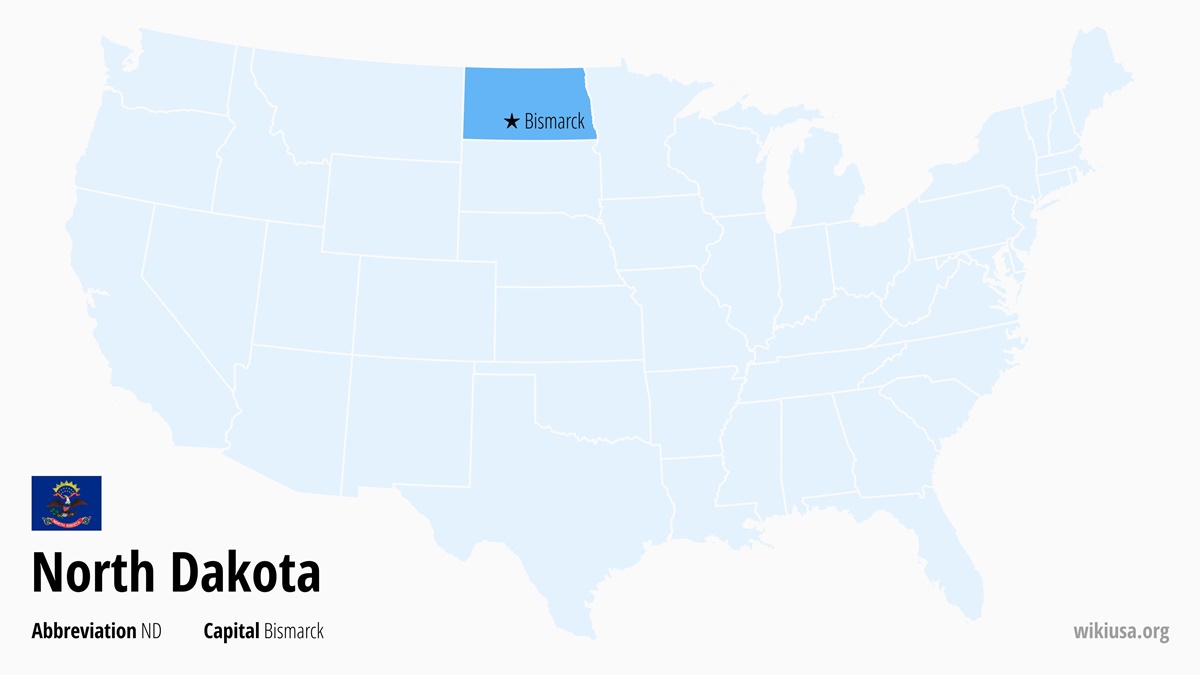
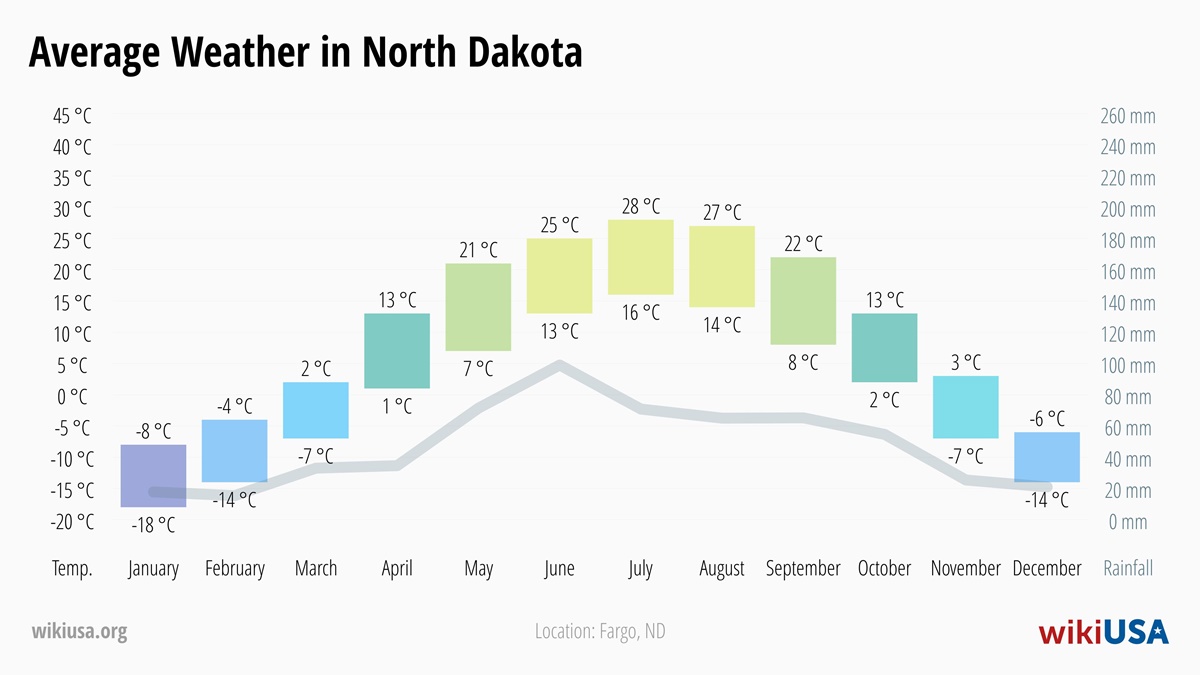
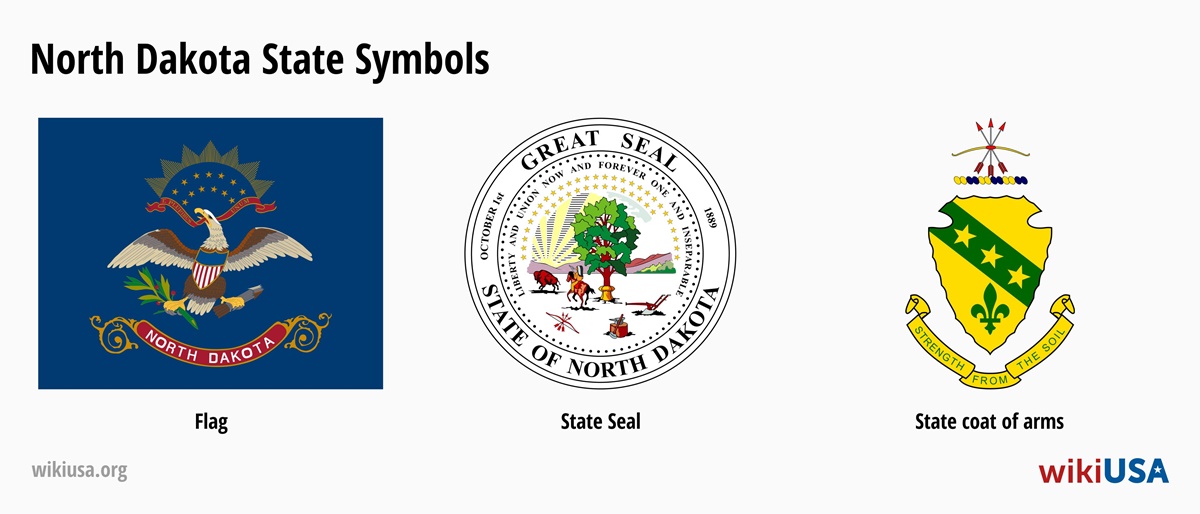
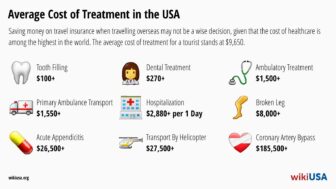

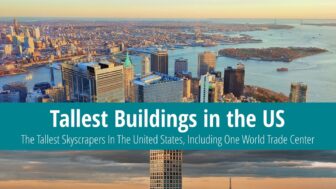

Contribute with Your Question or Personal Experience